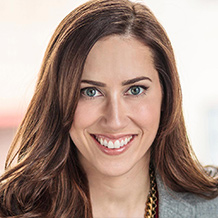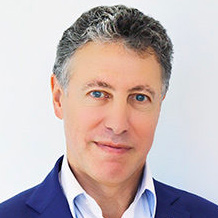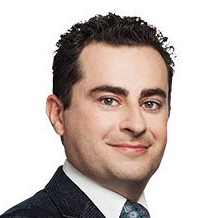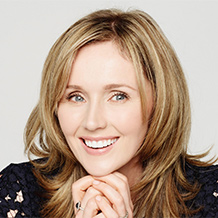
May 5, 2020
We asked our dermatologists to answer the most popular Google questions about rosacea. Here’s what they had to say (Part 2):
Dr. Marcie Ulmer, Vancouver dermatologist
Q: How do you treat rosacea spots?
The red bumps and pustules of rosacea can be tender and embarrassing. Proper treatment starts with good skin care including a non-irritating cleanser and moisturizer as well as a daily broad spectrum sunscreen (physical sunscreens tend to be less irritating than chemical sunscreens).
Several prescription topical therapies are very effective for the red bumps and pustules of rosacea (azeleic acid, ivermectin, metronidazole). Oral therapy is sometimes needed to settle down a flare such as the antibiotics doxycycline or tetracycline or less commonly the oral retinoid isotretinoin.
For most patients, because maintenance therapy with topical treatments is so safe and effective, long term maintenance with oral treatments is less often needed.
Red spots on the skin due to dilated blood vessels can be very effectively treated with vascular lasers and IPL.
Q: Can you stop the progression of rosacea?
Rosacea is considered to be a chronic condition that waxes and wanes meaning that at times it may flare up and at other times it may be quiet and stable. It is a disease that can show progression. For example, patients with rosacea often notice their complexion becomes “more blotchy”, “ruddy” or “more red” over time.
Initially the redness of rosacea can come and go but over time and with repeated flushing and dilation of the blood vessels, the redness becomes more prominent and is permanent rather than temporary.
Another example of progression in rosacea is seen with worsening of phymatous changes over time. Thickening of affected tissues of the nose, which occurs progressively over time, is known as rhinophyma.
Although we have no cure for rosacea, we currently have extremely good tools in our toolbox to treat all aspects of rosacea. Proper treatment from your doctor and adopting favorable lifestyle measures (e. g trigger avoidance, gentle skin care, sun avoidance) to minimize flares and inflammation all play a role in helping to limit disease progression.
Dr. Jason Rivers, Vancouver dermatologist
Q: Can you get rosacea on the chest or neck?
Rosacea is a condition that primarily affects the cheeks but the forehead, chin and eyes are also commonly affected areas of skin. Less often, this condition can appear on the scalp, ears, neck and chest.
On the neck and chest, rosacea initially shows as a flush usually after a preceding trigger factor (exercise, stress, etc). With time this transient redness may be replaced by a more permanent, fixed redness.
Although acne-like lesions may develop on the trunk, this is not a common event. In fact, if this happens, other conditions such as adult onset acne should be considered. Rosacea can mimic a number of diseases including acne, lupus, and seborrheic dermatitis to name but a few. Each of these conditions present subtle differences that can help to distinguish one condition from the other leading a dermatologist to the correct diagnosis and treatment plan.
Q: Do people of colour get rosacea?
Although rosacea is most often associated with people of fair-skin (the Celtic curse), people of colour can get rosacea. The hallmark of rosacea, persistent redness of the central face, may be difficult to perceive in those with darker skin and flushing (an early sign) may not be apparent.
However other features should alert someone they may have rosacea. These include a tendency to have a continually warm face, acne-like lesions that don’t resolve with regular acne treatment, burning or stinging sensations when skin products are applied to the face, and eye irritation characterized by dryness, a feeling like something is in the eye (foreign body sensation), and redness. In more advanced cases, a swelling or thickening of the nose may develop.
Dr. Benjamin Barankin, Toronto dermatologist
Q: Why do more women than men get rosacea?
It’s not clear that women are more affected. It’s possible that women seek care for milder cases while men are more likely to brush it off which we see with many dermatologic and other health-related issues. Some think that women have less sebaceous skin than men which makes them naturally more prone to irritation, dryness and inflammation. Certainly genetics and hormones likely play a role as well.
Q: Can sunscreen make rosacea worse?
Some people find certain sunscreens to be more irritating or drying than others, while some types of sunscreen are too occlusive or oily and can cause breakouts. It’s also possible to be allergic to some of the sunscreen ingredients. In general, it has been recommended for people with rosacea to use physical sunblocks that contain zinc oxide and/or titanium dioxide since allergy to these is rare, and irritation or sensitivity to them is much less common than with chemical sunscreens. At the end of the day, the best sunscreen is the one that feels good on your skin and that you’ll use, although you do want it to have great broad spectrum activity so bringing it in for your dermatologist to review is a great idea. If you do have issues with sunscreens, just remember that there are many other options including: seeking shade, wearing hats & sunglasses, minimizing or avoiding mid-day sun, and wearing sun protective clothing.
Dr. Ari Demirjian, Montreal dermatologist
Q: Is it OK to get a facial with rosacea?
No, unless the product is marketed to be safe for rosacea prone skin. Patients affected by rosacea have very sensitive skin. Facials containing scents, astringents, desiccants or exfoliants, even if derived from natural products, will create additional redness, peeling and overall inflammation of the facial skin.
Q: Does sweat aggravate rosacea?
No, but if you are sweating because your body temperature has gone up then the areas prone to rosacea will flush because of the heat. Leisurely walking, cycling, golfing, bowling, swimming can all be done without aggravating rosacea.
Q: What foods to avoid if you have rosacea?
Absolute avoidance is not required but you have to be aware that a glass of wine, spicy foods, a hot beverage amongst other things may induce flushing and redness on a temporary basis following consumption.
For every rosacea patient the beverage or food trigger may be different, therefore if you notice any specific product that induces the redness you may opt to avoid it.
Dr. Shannon Humphrey, Vancouver dermatologist
Q: What helps with redness from rosacea?
A multi-pronged approach can assist with redness from rosacea. Certain strategies include:
- Sun avoidance and protection
- Trigger avoidance (individualized triggers may include heat, cold, and spicy foods)
- Energy based light and laser treatments may be administered by a dermatologist to substantially improve redness from rosacea
- Certain prescription medications can temporarily improve the redness of rosacea
- Cosmetics and medical grade camouflage make up can temporarily improve the appearance of redness from rosacea
Q: What causes rosacea pimples?
Some patients with rosacea develop red bumps. The medical term for this type of rosacea is papulo-pustular rosacea. In common terms these may look like pimples that are pink in colour and may be associated with pus. It’s important to note that these pimples are not the same as the pimples of teenage acne. They occur because of inflammation within the skin.
Q: What foods are good for rosacea?
While no specific foods have been shown to improve rosacea, there is increasing evidence that the gut microbiome (bacteria in the gut) may play a role in rosacea. Healthy gut microbiome can be promoted by eating a diet that is high in plant based fibre. A healthy gut microbiome may also be promoted by eating probiotic foods containing active micro-organisms including fermented foods like yogurt, kefir, and kimchi.
More information about rosacea:
https://www.rosaceahelp.ca/about-rosacea/
Click here to view the original posting on The Acne and Rosacea Society of Canada website.




